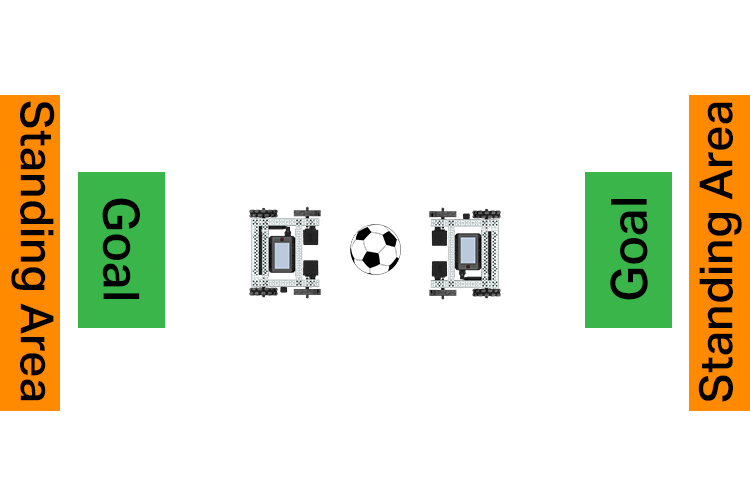Playing Robosoccer!

Playing Robosoccer!
In this challenge, you will play soccer with your VEX V5 Speedbot along with any attachments you may have added to it. You will be controlling your robot controller using the Drive program on your V5 Robot Brain.
One person will referee the game and ensure each team follows the rules.
Challenge rules:
- The ball should be placed in the center of the field at the start of each game and after each goal.
- The robot must begin in front of your net.
- Players must stand behind their own goal throughout the duration of the game.
- Each game is 5 minutes long.
- On smaller fields (3m x 3m or less), there should only be one player on each team. Teams can increase in size (2v2 or 3v3) for larger fields.
- The ball must completely be in the goal for the point to count.
- Each goal is worth 1 point.
- After a goal is scored, each team's robot(s) must be returned to the front of their goal and both teams have to give a thumbs up to the referee to indicate they are ready to start the match.
- The referee will start the game and stopwatch by saying "Go!" at the beginning of the game and after each goal.
- The team with the most points at the end wins!
- Have fun!
![]() Teacher Tips
Teacher Tips
Increase engagement by having students/teams choose an international team to pretend to play for. Ask students to investigate rivalries to add excitement to the matches. Students can even bring in countries' flags to fly during matches.
![]() Teacher Toolbox
-
Solutions
Teacher Toolbox
-
Solutions
Solutions will vary greatly, depending on the materials available to students and how they decide to incorporate the attachment into the robot's overall design.
Some students might decide to include multiple attachments, one on each side of the robot for example, so that one side is used for moving the ball around and the other side is used for guarding the goal. That is acceptable and shows good design intuition. It is sometimes difficult to design a multipurpose component. Designs are sometimes better when each component has a more focused function.